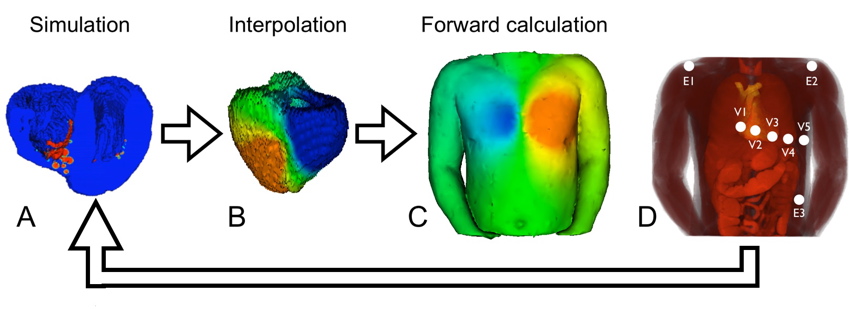Impact of distinctive parameters of the cardiac and thoracic model on the solution of the forward problem of electrocardiography
- Forschungsthema:Impact of distinctive parameters of the cardiac and thoracic model on the solution of the forward problem of electrocardiography
- Typ:Diplomarbeit
- Betreuung:
- Bearbeitung:
Based on the excitation sequence on the heart, the electrical potential distribution on the body surface can be calculated. This task is often described as solving the "forward problem of electrocardiography". The result is the so-called Body Surface Potential Map (BSPM) from which standard ECG leads can be extracted. In order to generate realistic results a detailed cardiac model is needed as well as a thoracic model that characterizes the varying conductivity of different tissues.
The scope of this project is to evaluate the impact of different parameters from both the cardiac and the thoracic model on the BSPM and ECG.
To characterize the influence of the cardiac model, heart beats that have been generated using different parameter sets are supposed to be forward calculated on a well-known thoracic dataset. It should then be investigated if variations in the simulation parameters can be detected on the body surface, and if so, in which way this is possible.
As a next step the thoracic model is under investigation. Different tissues or organs should be ranked according to their importance for the calculation of the BSPM. This should be done by varying the respective material conductivity and comparing the resulting BSPMs and ECGs.

The results of the excitation conduction simulation (A) are interpolated on a finite element mesh (B). Starting from this potential distribution on the cardiac geometry the BSPM is calculated (C). In (D) a visualization of the thoracic model can be seen together with the standard Wilson and Einthoven ECG leads. The pattern of the calculated BSPM should allow an inference in terms of where it might be possible to extract a parameter of the cardiac model from patient BSPM measurements.

